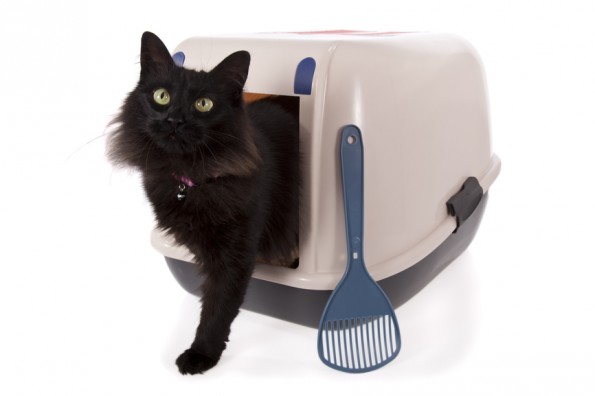Cats make great indoor pets for many reasons, but their fastidious bathroom habits are surely near the top of that list. When it comes to what kind of litter you should use, the possibilities seem endless. As litters are made from many different materials that boast a host of different features it can be difficult to choose the right one for you and your cat. As dedicated Vancouver veterinarians, we want to support our patients and community by offering advice to guide you in this decision.
Here are the main choices in the kitty litter department:
- Clay – this type of litter is often inexpensive, available in bulk form and generally does a great job controlling odours. Although it is the least expensive per pound, you may use more of a clay litter as the entire box needs to be replaced more frequently to keep odours controlled. It also can be quite dusty, making it an especially poor choice for any cat with respiratory problems. It can often be found in a scented, unscented or dust-free formula.
- Clumping – these litters typically have a finer grain that dissolves on contact with moisture, forming a clump, which can then be easily scooped out of the box. They generally have good odour control and are non-dusty. They are very amenable to spot cleaning which means the entire box needs to be replaced less frequently. Drawbacks can include litter sticking to moisture on cats paws and tracking around the house. A mat in front of the litter box can help combat this to knock litter off of your cats paws; but it may not be the best choice for cats with long hair or young kittens.
- Alternative litters – there are many alternative products that are made from recycled newspaper, sand, corn, pine or wheat products, and may be available as clumping or non-clumping litters. Some of these products may appeal to you as they may be sustainable, flushable or biodegradable. The wide range of products makes it difficult to generalize about their qualities, but the majority are dust-free and offer moderate odour control.
So what kind of kitty litter should you chose? Each different type has it’s benefits but most importantly is what your cat prefers. Some cats are very particular so if you are thinking about changing your cat’s litter substrate it is important to do so slowly by mixing the two types together initially. If your cat does not like the new litter you may be finding waste in places around the house you were not expecting!
If your cat is voiding inappropriately outside the box it is also important to visit a veterinarian to ensure there is not a medical cause for this behaviour.
We hope this advice helps you find a litter solution that works for you!

